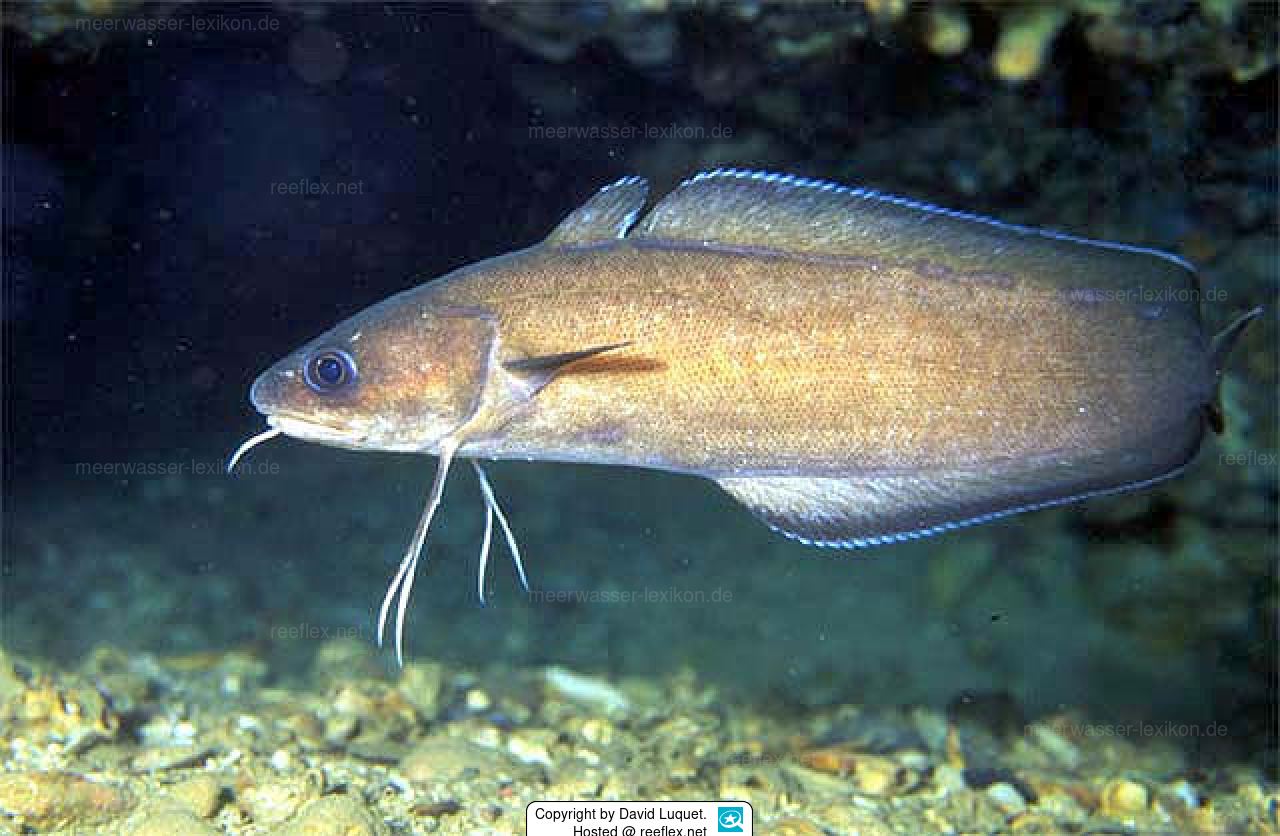Info
(Linnaeus, 1766)
Phycis phycis belongs to the forkbeards, which live in shoals in the Atlantic Ocean, the Mediterranean Sea, and also in the North Sea.
The name “hake” comes from the animal's thin, elongated pelvic fins, which are forked at the end.
Like all cod, they have a barbel on their chin, which serves as a sensory and taste organ.
They can weigh up to approximately 4 kilograms and feed on benthic crustaceans and small fish.
This forkbeard lives on hard and sandy bottoms near rocky outcrops at depths of approximately 100–650 m, sometimes even deeper, which is why it is less suitable for commercial fishing.
Synonyms:
Phycis furcatus Bowdich, 1825 · unaccepted (ambiguous synonym)
Blennius phycis Linnaeus, 1766 · unaccepted (synonym)
Phycis limbatus Valenciennes, 1838 · unaccepted (synonym)
Phycis mediterraneus Delaroche, 1809 · unaccepted (synonym)
Tinca marina Walbaum, 1792 · unaccepted (synonym)
Phycis phycis belongs to the forkbeards, which live in shoals in the Atlantic Ocean, the Mediterranean Sea, and also in the North Sea.
The name “hake” comes from the animal's thin, elongated pelvic fins, which are forked at the end.
Like all cod, they have a barbel on their chin, which serves as a sensory and taste organ.
They can weigh up to approximately 4 kilograms and feed on benthic crustaceans and small fish.
This forkbeard lives on hard and sandy bottoms near rocky outcrops at depths of approximately 100–650 m, sometimes even deeper, which is why it is less suitable for commercial fishing.
Synonyms:
Phycis furcatus Bowdich, 1825 · unaccepted (ambiguous synonym)
Blennius phycis Linnaeus, 1766 · unaccepted (synonym)
Phycis limbatus Valenciennes, 1838 · unaccepted (synonym)
Phycis mediterraneus Delaroche, 1809 · unaccepted (synonym)
Tinca marina Walbaum, 1792 · unaccepted (synonym)







 David Luquet, Frankreich
David Luquet, Frankreich






